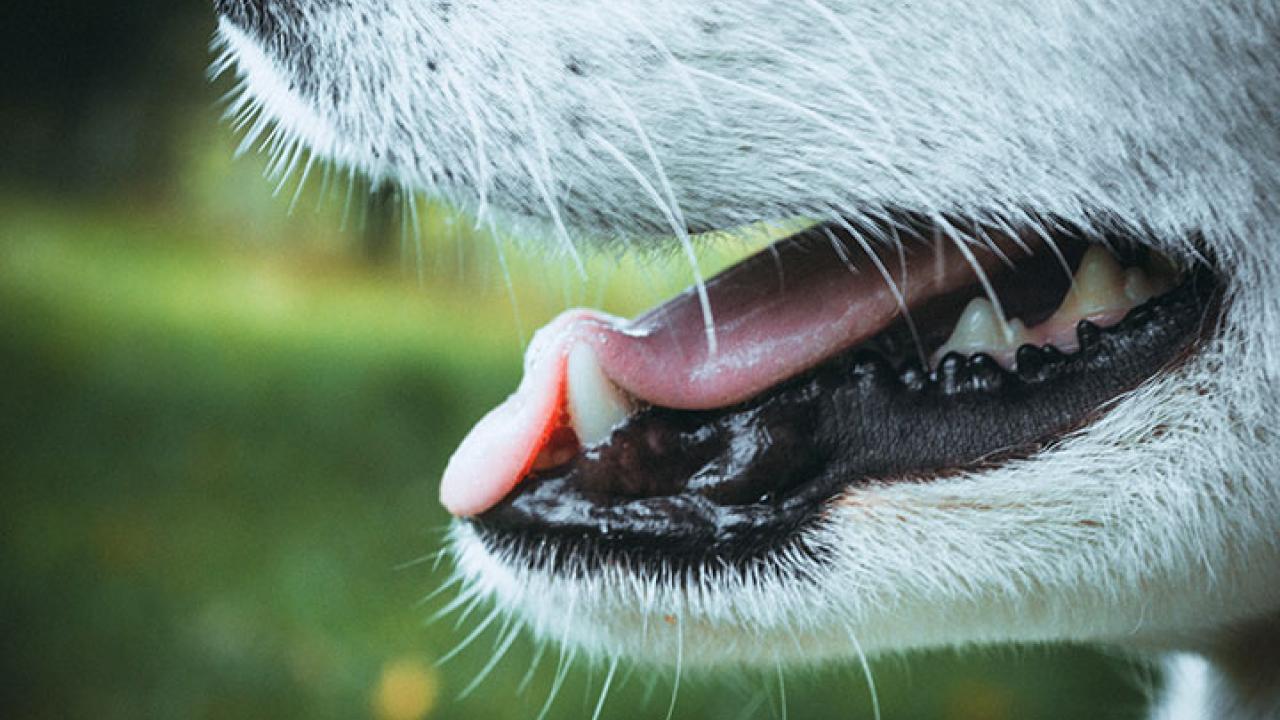
Halitosis in Dogs
Halitosis in Dogs
Are some dog breeds more prone to halitosis?
Although no breed predispositions have been reported, some specific dog breeds, such as toy breeds, are more likely to have gum disease and therefore are more likely to have bad breath.
Do flat-nosed breeds often develop severe halitosis?
Small breeds and those with flat noses (brachycephalic breeds) more often have periodontal disease, likely due to their anatomical predisposition, which may be the major source of bad breath. The nose and throat may also be sources of bad breath, especially if any co-existing disease is present.
Does the fur around the snouts of "bearded" dogs (like Schnauzers) potentially contribute to bad breath?
Long hair around the mouth can more easily become dirty with food particles and saliva. This debris harbors bacteria that “feed on” it, resulting in an unpleasant smell. In addition, if the skin around the mouth is constantly wet, dermatitis (inflammation and infection of the skin) can develop, contributing to the smell.
What are some symptoms that might indicate there’s a more serious health problem underlying a dog’s bad breath, like periodontal disease?
When bad breath is noticed, the animal should be examined by a veterinarian. Most often oral/dental disease will be found. If the veterinarian feels that oral/dental disease may not be the sole cause of the bad breath, he/or she will recommend additional tests (for example, blood or urine tests) and procedures to rule out other possible causes of bad breath.
How should dog owners gauge the level of their dog’s breath to determine if it’s time to visit a veterinarian for an evaluation?
Bad breath in your pet is very often associated with a health problem and should be taken seriously, and the animal evaluated by a veterinarian. Ideally, an animal is evaluated by a veterinarian and/or a veterinary dentist every year.
What are some health issues that bad breath might be a symptom of in younger pets? In older pets?
The most common origin of bad breath is the mouth. The source of bad breath is the bacteria in biofilms that cover all oral surfaces, but especially the tongue and gums. When gum disease (periodontal disease) is present, this can be the major source of bad breath. Almost all older animals have some stage of periodontal disease. Other oral and dental diseases, such as broken and infected teeth, severe oral inflammation, oral cancer and foreign bodies can also cause severe bad breath. These diseases can affect an animal at any age. Other potential sources of bad breath are the nose, throat and tonsils, lungs, esophagus and stomach. Some systemic diseases (for example, liver disease, kidney disease and diabetes mellitus) can also cause bad breath. Most of these diseases also tend to develop more often with increasing age of the animal, but an animal can have a serious medical issue at any age.
What can dog owners do to prevent halitosis and keep their dog’s breath fresh?
Daily tooth brushing is the gold standard to remove bacteria from the dental and (if an animal allows) other oral surfaces. Together with regular professional periodontal treatments, this will help prevent development of periodontal disease and bad breath. In addition to daily tooth brushing, one can also use dog tooth pastes and other products for improvement of oral health in an animal (for example, oral rinses, chewing products). If an animal with a healthy oral cavity still suffers from bad breath, other diseases will need to be ruled out by a veterinarian.
*This article may not be reproduced without the written consent of the UC Davis School of Veterinary Medicine.
